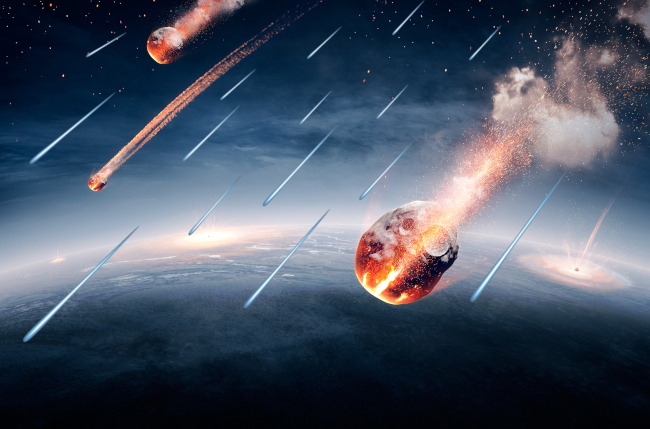
An international team of scientists may have solved a key mystery about the origins of the Earth’s water, after uncovering persuasive new evidence pointing to an unlikely culprit – the Sun.
In a new paper published today in the journal Nature Astronomy, a team of researchers from the UK, Australia and America describe how new analysis of an ancient asteroid suggests that extraterrestrial dust grains carried water to Earth as the planet formed.
The water in the grains was produced by space weathering, a process by which charged particles from the Sun known as solar wind altered the chemical composition of the grains to produce water molecules.
The finding could answer the longstanding question of just where the unusually water-rich Earth got the oceans which cover 70 percent of its surface – far more than any other rocky planet in our Solar System. It could also help future space missions find sources of water on airless worlds.
Planetary scientists have puzzled for decades over the source of Earth’s oceans. One theory suggests that one type of water-carrying space rock known as C-type asteroids could have brought water to the planet in the final stages of its formation 4.6 billion years ago.
To test that theory, scientists have previously analysed the isotopic ‘fingerprint’ of chunks of C-type asteroids which have fallen to Earth as water-rich carbonaceous chondrite meteorites. If the ratio of hydrogen and deuterium in the meteorite water matched that of terrestrial water, scientists could conclude that C-type meteorites were the likely source.
The results weren’t quite that clear-cut. While some water-rich meteorites’ deuterium/hydrogen fingerprints did indeed match Earth’s water, many did not. On average, these meteorites’ liquid fingerprints didn’t line up with the water found in Earth’s mantle and oceans. Instead, Earth has a different, slightly lighter isotopic fingerprint.
In other words, while some of Earth’s water must have come from C-type meteorites, the forming Earth must have received water from at least one more isotopically-light source which originated somewhere else in the Solar System.
The University of Glasgow-led team used a cutting-edge analytical process called atom probe tomography to scrutinise samples from a different type of space rock known as an S-type asteroid, which orbit closer to the sun than C-types. The samples they analysed came from an asteroid called Itokawa, which were collected by the Japanese space probe Hayabusa and returned to Earth in 2010.
Atom probe tomography enabled the team to measure the atomic structure of the grains one atom at a time and detect individual water molecules. Their findings demonstrate that a significant amount of water was produced just below the surface of dust sized grains from Itokawa by space weathering.
The early solar system was a very dusty place, providing a great deal of opportunity water to be produced under the surface of spaceborne dust particles. This water-rich dust, the researchers suggest, would have rained down onto the early Earth alongside C-type asteroids as part of the delivery of Earth’s oceans.
Dr Luke Daly, of the University of Glasgow’s School of Geographical and Earth Sciences, is the paper’s lead author. Dr Daly said: “The solar winds are streams of mostly hydrogen and helium ions which flow constantly from the Sun out into space. When those hydrogen ions hit an airless surface like an asteroid or a spaceborne dust particle, they penetrate a few tens of nanometres below the surface, where they can affect the chemical composition of the rock. Over time, the ‘space weathering’ effect of the hydrogen ions can eject enough oxygen atoms from materials in the rock to create H2O – water – trapped within minerals on the asteroid.
“Crucially, this solar wind-derived water produced by the early solar system is isotopically light. That strongly suggests that fine-grained dust, buffeted by the solar wind and drawn into the forming Earth billions of years ago, could be the source of the missing reservoir of the planet’s water.”
Prof. Phil Bland, a John Curtin Distinguished Professor at the School of Earth and Planetary Sciences at Curtin University and co-author of the paper said “Atom probe tomography lets us take an incredibly detailed look inside the first 50 nanometres or so of the surface of dust grains on Itokawa, which orbits the sun in 18-month cycles. It allowed us to see that this fragment of space-weathered rim contained enough water that, if we scaled it up, would amount to about 20 litres for every cubic metre of rock.”
Co-author Prof. Michelle Thompson of the Department of Earth, Atmospheric, and Planetary Sciences at Purdue University added: “It’s the kind of measurement that simply would not have been possible without this remarkable technology. It gives us an extraordinary insight into how tiny dust particles floating in space might help us balance the books on the isotopic composition of the Earth’s water, and give us new clues to help solve the mystery of its origins.”






